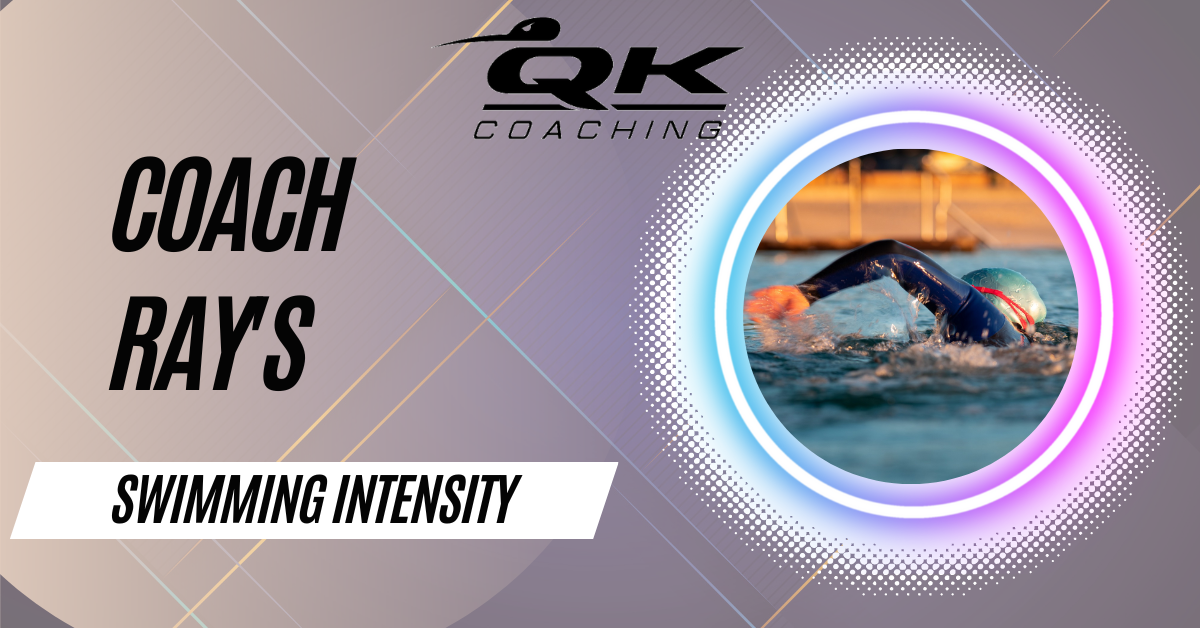Intensity is the key to the success of your swim training. By training at the correct intensities, we can manipulate the physiological responses your body gets. This will generate the greatest improvement from where your running fitness currently is.
There are a number of different ways of measuring or estimating intensity depending on what features your watch has (or whether you even use a watch).
With in my training plans and workouts the intensity is described using my Level’s system:
- Level I
- Very low intensity and is not used in this programme.
- Level II
- A low to moderate intensity, at this level it is easy to converse with any training partner.
- Whilst running at this intensity you will improve the efficiency of your heart and lungs and also increase the density of the mitochondria in your muscle fibres. Your lungs will transfer oxygen for the air into the blood, and carbon dioxide back the other way more easier. Your heart will be bigger and pump more blood with each beat. More blood being pumped means more oxygen gets carried to the muscles. The mitochondria within the muscles will utilise this oxygen as it converts energy to create the muscle contractions.
- Level III
- A moderate intensity level and is only used on some of the sessions. We get more bang for our buck at higher and lower intensities.
- Level IV
- Threshold level, this intensity will hurt, but not so much that you can’t run at it. It is a pace that you can sustain for a while, but not for ever. If you tried talking to a training partner whilst running at this level you would only get out short sentences.
- At this level you will be producing lactic acid. Although lactic acid is what creates the burning sensation in the muscles, lactic acid provides us with plenty of benefits as well. When converted in the liver, lactic acid gets turned in to pyruvate which in turn can get used as an energy fuel. Training at this intensity develops your ability to tolerate lactic acid, which in turn means you can then make greater use of the benefits pyruvate provides.
- Level V
- VO2 Max level, this intensity will hurt (lots), but not so much that you can’t run at it for a few minutes at a time. If you tried talking to a training partner whilst running at this level you would only get out a few words but mainly grunts and groans whilst trying to suck in more air.
- Running at this level helps develop your VO2 Max (or put another way it helps improve the volume of oxygen you can utilise at your maximise intensity). To improve this you need to work at your maximum.
Pace Zone
Utilising swimming pace is one of the most common methods of determining swim intensity. With the influx of a great range of GPS watches from companies like Garmin, Coros and other companies, your pace can be easily measured and monitored.
I recommend using the 80/20 Intensity Zones that align with my Levels. These have been devised by Matt Fitzgerald & David Warden in their book .
| Level | % of CV |
| Level II | 84 – 91% |
| Level III | 96 – 100% |
| Level IV | 102 – 106% |
| Level V | > 106% |
Calculating Critical Velocity (CV)
There are a couple of ways of determining your Critical Velocity (CV) (also known as Critical Swim Speed (CSS) or T-Time).
You can use Swim Smooth‘s CSS session here:
As al alternative you can swim a 1,000m time trial and average out your 100m pace to determine your Critical Velocity.

One Reply to “Intensity For Swimming”